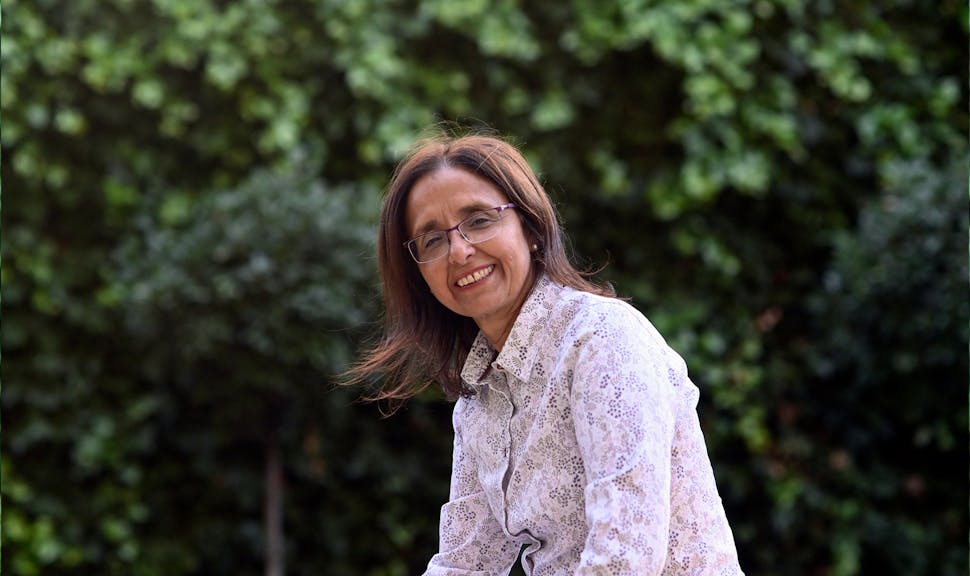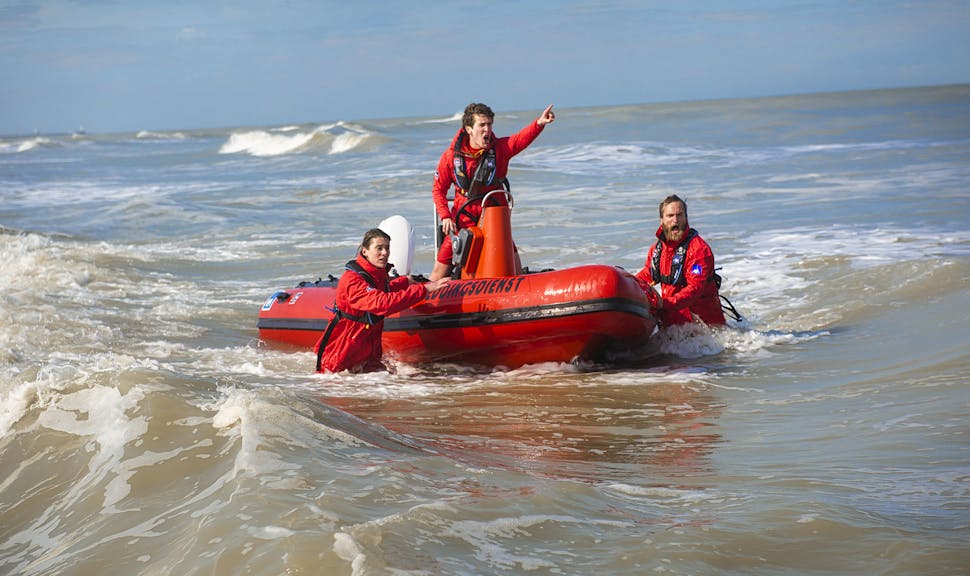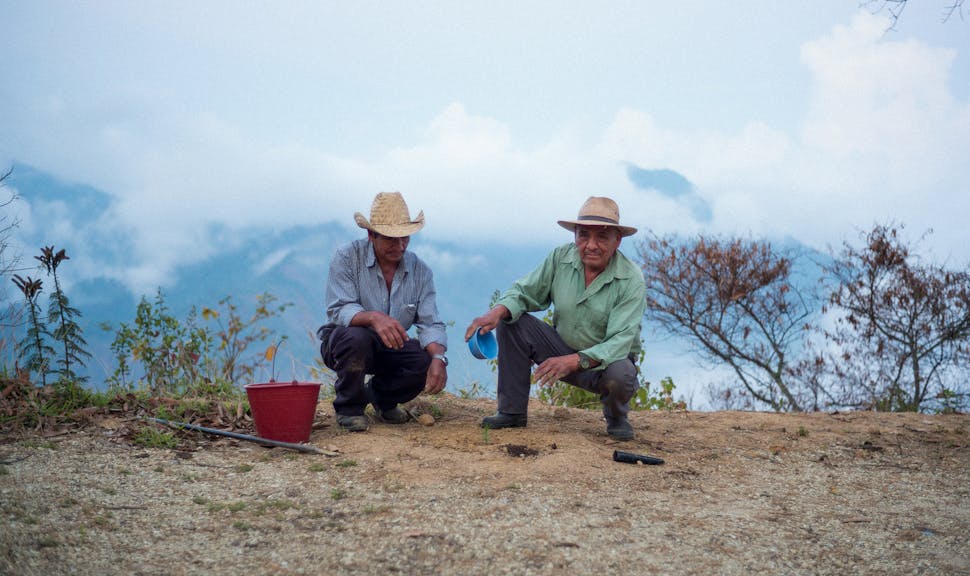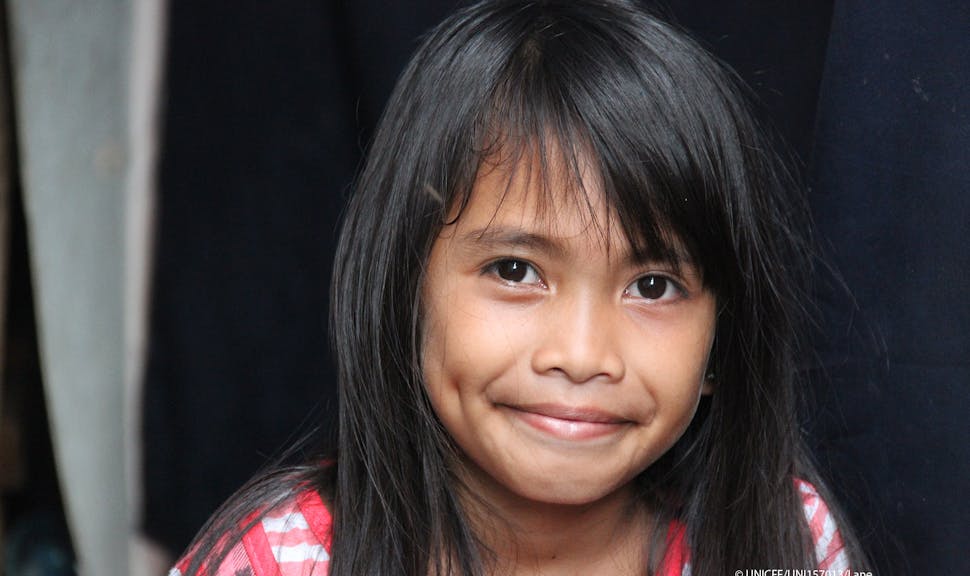

Stephanie WongAXA Hong Kong
May 23, 2016
How To Change The World With A Selfie
Stephanie Wong talks about what it’s like to take action to protect the environment, win a global challenge at work and travel to India to see NGO CARE help tribal communities deal with the challenges posed by climate change.
7 minutes
Presented with a soft blanket, pillowcase and two cotton bed sheets, Stephanie Wong, Senior Officer of Organization Development at AXA Hong Kong, is pointed to a plain but comfortable bunk bed aboard the Durg-Ambikapur Express, a night train on a 10-hour journey from Raipur Junction to Ambikapur, a village at the northern tip of the Indian state of Chhattisgarh. Upon her arrival, she’ll be welcomed by hundreds of smiling faces, live music and necklaces of marigold.
And all because of a few selfies.
Well, about 90, actually.
Picture yourself making a difference.
In June 2015, sitting at her desk in Hong Kong, Stephanie spotted a notice about AXA’s fifth annual Corporate Responsibility Week. Employees around the world were being challenged to snap pictures of themselves taking action to protect the environment, and post them on a dedicated platform (over 2,000 in 33 countries ended up participating, see article).
Each posted selfie counted as a vote towards selecting one of several community projects led by NGO CARE to be funded by AXA. The best “selfie-ers” would win a trip to visit the project and check out work being done on the ground.
Stephanie was immediately attracted to the idea, and to the main prize: in this case a tour of four rural villages in Chhattisgarh, India, with other CR Week winners, to see how CARE’s “Where The Rain Falls” Community Based Adaptation (see article) project helps Adivasi (tribal) women and their communities address climate change, with a particular emphasis on empowering girls and women to better care for their household and family.

CARE’s “Where The Rain Falls” Community Based Adaptation project helps Adivasi (tribal) women and their communities address climate change, with a particular emphasis on empowering girls and women to better care for their household and family.
CARE India - “Where The Rain Falls” Community Based Adaptation Project
Project site: Jashpur District, Chhattisgarh, India
Approved: January 2013
Main goal: Improved water security and governance to increase resilience of Adivasi (tribal) women and their communities
Direct beneficiaries: 2,033 Adivasi women (10,165 total household members)
Project area population: 17,189 (20 villages total)
Key accomplishments (Phase II):
- Mapped water structures in 20 villages;
- Piloted improved paddy cultivation and crop diversification with 72 households;
- Linked households to various entitlements and government schemes;
- Undertook soil and land development works for groundwater recharge and water storage with 20 households;
- Organized 15 Village Development Committees;
- Revived 72 Self-Help Groups (SHGs) and organized 10 new SHGs;
- Developed a cadre of 20 grassroots animators
Selfless selfies.
She started snapping pics almost immediately, quickly racking up an impressive collection of selfies. “I think I took over ninety,” she explains. “I was always interested in international development, and when else are you going to be able to be in the field and see an organization as large as CARE actually carry out their work?”


“It’s funny,” she continues, “I’m not really a selfie taker… I don’t have Instagram, I don’t post public photos of myself, at all. But it was such a good prize, I was willing to put that aside,” she chuckles.
Asked how she managed to orchestrate over ninety different snapshots of her taking action for the environment, she initially talks about changing eating habits, like moving to sustainable foods such as local produce and avoiding meat.
“There were a lot of me eating different kinds of vegetables,” she explains. “Turning off lights, using stairs, public transport…the basics. Plus stuff like turning the energy savings level for my TV up to maximum. For a while, the people I lived with were wondering why everything was so dark all the time,” she laughs. “Also, some really interesting carbon-calculating programs: based on your transportation and the kind of food you eat, you would know how much carbon you’re contributing.”
A surprise win.
When prompted to describe how she learned she’d been selected for the trip to India, Stephanie grins. “The CR (Corporate Responsibility) team in Paris contacted my manager, who had this brilliant idea to send me an invite for a really urgent ‘meeting’… Meanwhile she told everyone else in my team.”
“Everybody’s stalling me, trying to prepare in the meeting room. I remember one of my colleagues telling me ‘Shouldn’t you go get your laptop?’ because they needed more time to set up… Then I walk in, and here they are with a cake!” She pauses, “I was completely thrilled. I have a really great team: just the fact that they put in the effort to do all of this…”
The trip itself was also surprising, she adds: “When we got to the first village, and, actually, this happened in every single village we got to, we were given a massively grand welcome… music, people singing, everybody dressed up, and these garlands of marigold, which they would put over you and by the time each woman had gotten past you, your neck is thick with flowers… People were just really excited to see us… it was amazing how willing and open they were to sit and talk with us about the things they were doing.”

"this happened in every single village we got to, we were given a massively grand welcome… music, people singing, everybody dressed up, and these garlands of marigold, which they would put over you"
Bharati Joshi, Technical Director of CARE India’s Economic Development Unit, expands: “If you see it from the community’s side, it provides them an opportunity to meet people - especially for women to meet other women - from other countries… demystification takes place and there’s also the pride of being a host… so even if it requires effort to come for these meetings and contribute and share, they happily do that: it’s like a festival for them.”
Manoj Singh, a Technical Specialist with CARE India, adds: “This is not a one-time thing, it’s a continuous process with the adivasi communities… they realize they are getting empowered.”
Sowing the seeds of change.
Stephanie describes what it was like to meet with villagers and learn about their efforts: “We would have a facilitated discussion, understanding what kinds of sustainable agricultural techniques were being used, things like SRI (System of Rice Intensification), line-sowing… You could see the difference: the importance of sowing in lines for a higher yield.”
“And then, being able to witness the self-help groups set up there. Apparently a lot of villages already have these but maybe didn’t find them as important anymore… So CARE came in and revived them, or started new groups: collectives of 10-15 women who might set aside a small amount of money once a month to put towards somebody who’s in need, or to invest. One of CARE’s main messages is they place a huge emphasis on getting women out of poverty. Essentially, they do gendered analysis of everything… through research they’ve understood women are the ones who are usually disproportionately affected by poverty, discrimination, and that there are lots of unequal gender and power relations and dynamics.”

Empowering women to fight climate change in Chhattisgarh
“I think one of the really cool projects is the 5% model of rainwater harvesting, where farmers take 5% of their land and build a big ditch that fills with rainwater… it seeps into the surrounding land and serves as a really good advertising mechanism. It seeps into your neighbors’ yards, and that’s great for them too, and they’re able to see the difference. We heard so many stories about how one farmer decided to implement this model and afterwards a guy in the neighboring plot of land did the same thing, and the one next door… you were able to understand the ripple effect.”

“I think one of the really cool projects is the 5% model of rainwater harvesting, where farmers take 5% of their land and build a big ditch that fills with rainwater"
ANNE LAROCHE
CORPORATE RESPONSIBILITY OFFICER, AXA GROUP STRATEGY, SUSTAINABILITY AND PUBLIC AFFAIRS
This visit enabled us to better understand progress made in the field. Our colleagues visited the same project exactly one year before us. In 2014, a 5% model was under excavation and now, it’s full of water and the crops are growing!
Corporate culture in the community.
“There was a lot of work put into gaining the trust of all of the villagers, understanding what their issues were, and coming up with ways to be able to create solutions meaningful for them… What was really good about this is that it felt like a genuine partnership. I work in organization development, so a lot of the work I do, and things I think about, are mindset change, and how to grow a corporate culture that is going to be able to make work a better place for everyone.”
“When you look at that in the context of an NGO and people working in agriculture, there were lots of similarities, i.e. knowing your stakeholders and getting buy-in, building trust… all to put together an initiative that’s really going to improve someone’s life. None of this is rocket science… it was really cool to be able to see those kinds of parallels. To be part of something that felt real, was good.”
2016 and beyond.
We ask Stephanie whether she’ll participate in this year’s Corporate Responsibility Week. “Depends on what the challenge and what the prize is.” she jokes. Joking aside, for her these kinds of ongoing CR (corporate responsibility) activities are vital for people and organizations:
“What you usually associate CR with is volunteering. I think this sort of partnership with CARE makes it come alive more. It’s more than a beach clean-up and more than spending time with the elderly in a nursing home… We have talent and we’re in a position of privilege and should use our talents to do what we can… recognizing our role in making society fairer or more just or a better place to live… I feel CR Week is a great way for you to be able to explore some of those wider-than-your-immediate-box topics.”
The 6th edition of AXA Corporate Responsibility Week is here. Featuring three main themes (prevention of climate risks, health risks, and financial risks) and an engaging digital game, it kicks off today, May 23rd, 2016.
On this new edition, Stephanie has this to say: “I’m definitely going to participate, but I feel like it’s hard to top this experience.”
She smiles, “And you gotta let someone else win…”




